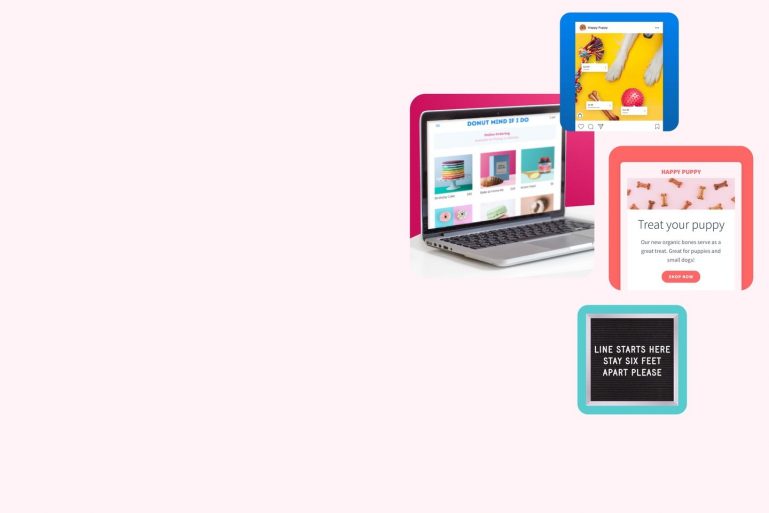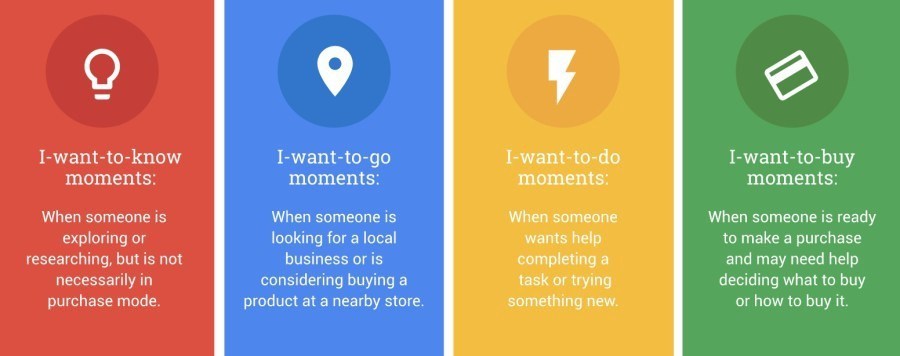
Marketing in the New Normal: 5 Effective Strategies for 2021
2020 has brought a ton of big changes. Between a global pandemic and social revolution, the way we communicate and connect with each other has naturally shifted. Which is to say, what consumers want from retailers and e-commerce sellers has changed dramatically. According to McKinsey, some of the major consumer shifts from the onset of COVID include:
- Flight to online shopping. Having an eCommerce website for your business is no longer optional. The pandemic accelerated eCommerce growth by 4-6 years.
- Shock to loyalty. Since COVID disrupted the supply chain for many common household items, many consumers took that as an opportunity to try out different brands. Attributes like value, availability, and quality are now huge drivers of brand loyalty.
- Staying clean and transparent. Hand sanitizer, social distancing signs, masks, temperature checks, and countertop screens have made their way into everyday business. Updating your customers on your sanitation practices has never been more important for their safety and peace of mind.
- Rise of the homebody economy. The home has become the center of everything: work, school, shopping, entertainment, and more. Businesses have pivoted quickly to providing virtual experiences that are safe to enjoy from home.
To build a successful marketing campaign for your business, you can’t overlook these shifts. For 2021, you have to shift your marketing tactics to appeal to customers in the new normal.
Consider how you can use these strategies to build a more successful and effective marketing plan in 2021.
1. Inclusion-Based Marketing
Diversity has been a critical topic in 2020 and as a brand, it’s important to make it a large part of your marketing efforts if you haven’t done so already. As Ann Gynn, blog editor at the Content Marketing Institute explains, “Your audience members want to see themselves in your content and no single image can convey that. More importantly, they want to know that you see them — physically, geographically, psychologically, etc. They want to make sure you get their needs, their pain points, their thoughts.”
Before marketing to new audiences, you need to listen to them and fully understand what they need. When a potential customer can see their experience accurately reflected in your marketing, they’re more likely to engage with your content and purchase a product or service.
Once you’ve listened, had conversations, and done your research, don’t wait until 2021 to make changes. Start now, if you can. In How 2020 Changed Your Social Media Marketing, digital marketer Tracy Ring suggests that businesses “audit your current brand presence and notice what stock photos you use and the audience you speak to. Slowly start expanding your horizon to be more inclusive and diverse.”
2. Real-Time and Consistent Communication
Real-time communication is more important now than ever. As the editorial staff at Zingle explain: “Amidst a global health crisis, the need for speed, convenience and responsiveness is even more important, and ideally, without any face-to-face contact. Businesses must be ready to engage consumers on their terms and today that means through text messaging and real-time communication.”
To celebrate more success with your marketing in 2021, try to encourage communication and engagement and spark real-time conversations with your audience. Luckily, social media makes sparking a dialogue easier than ever. Here are a few examples:
- Go live on Instagram, Facebook, or YouTube as the owner of your business. Answer questions in real-time to connect with your followers. According to 2019 Sprout Social data, consumers feel more connected to brands that are active on social media.
- Use engagement features like polls on Twitter or the Questions sticker on Instagram Stories to give your customers and communities a chance to share their voice.
- Start a hashtag campaign around topics that are relevant to your brand. Comment on all posts that use your hashtag to get into a conversation with those participating.
SEE ALSO: How to Build a Brand on Instagram for Your Small Business
3. Unique Influencer Partnerships
Regardless of your budget, influencer campaigns can be used to enhance your brand identity and story. Diversify your approach to have a bigger impact and reach your community on all levels by partnering with a mix of influencer types. For example, consider both of these options:
- Micro-Influencer (500 to 100K Followers): An influencer with a small, engaged audience in a specific niche or topic. These influencers will help engage specific, focused audiences.
- Macro-Influencer (100K to 1 Million Followers): An influencer with a large audience in a broader market. These influencers will likely be more expensive but have a greater capacity to increase your brand’s reach.
Influencers can help you start those important conversations and reach your audience with greater impact and trust but diversifying who you work with is important. When scouting influencers, make sure to look at not just follow count, but also engagement rates, aesthetics, messaging, and diversity.
4. Consumer Micro-Moments
More often than not, modern consumers are performing their own competitive research and cost analysis before making a final purchase decision. Micro-moments refer to moments where action or intent is very high: “when a person turns to a device to act on a need—to know, go, do or buy.” Knowing how to capitalize on these moments with engaging content is key to a more effective marketing strategy in 2021.
In How to Capture Micro-Moments With Your Content Strategy, I explain that three elements to consider when building a content strategy around micro-moments are:
- Building question-based queries into your content strategy
- Building content around brand awareness and value
- Optimizing your eCommerce website’s SEO
Begin by thinking about the “I want” statements that your potential customers may be making to identify the micro-moments that are most relevant to your marketing strategy. Generally speaking, there are four key moments you can capitalize on:
When you have these statements figured out, you can turn back to the three tactics:
- What questions come from your “I want” research? How can you build content around that?
- How can your content tie more into brand awareness and value, rather than just selling?
- What edits to your website do you need to make to ensure you capture potential customers during these micro-moments?
SEE ALSO: How to Transition from Brick-and-Mortar to an Online Store
5. Targeted Storytelling
Stories are a natural source of connection. When you share your brand’s story, you create an opportunity to engage with our audience on an authentic level. But don’t just create a standard brand story — take it a step further in 2021 and connect into the social impact your brand wants to bring to the world.
The 2020 Edelman Trust Barometer found 58 percent of consumers feel that “being a positive force in shaping our culture, influencing acceptable behaviors and attitudes, and elevating those who are inspirational to others,” is a key aspect of brand trust.
Hone in on your most authentic and socially-impactful brand story with these three storytelling components:
- Don’t tell—show. Let your work do the talking. Avoid using buzzwords that carry no real value to a consumer and make them feel what you feel. Focus on how your business is impacting the world in an authentic way.
- Create an ongoing story arc. Make sure your brand story has a clear beginning, middle, and end. Learn more about the 12 steps of the hero’s journey as a guide.
- Craft a specific viewpoint. Your story and the viewpoint that you share from is what gives people a connection point to your brand. How does your brand story connect with your view of the world and the bigger mission of your business?
Once you’ve developed your impact-driven brand story, build it into your messaging in every element of your marketing, from paid campaigns to email marketing to drive that connection.
Effective Marketing Strategies in 2021: The Bottom Line
Long gone are the days of cookie-cutter marketing plans. It’s more important now than ever that you focus on not just on what your customers want from you, but how you can stand out from your competitors with a socially-impactful brand story, content that capitalizes on micro-moments, and influencer partnerships that build trust. Lean into the shift that 2020 has brought us to have more success in the new year.
Want to try ShopKeep for yourself?
Just answer a few easy questions.
Need help finding the right point of sale?
Just complete the form. We’ll call you right back to explain how ShopKeep can work for you.
Hit the ground running.Sprinting, in fact!
Read our free, comprehensive guide, Small Business 101, to learn all you need to know about starting a thriving business.


